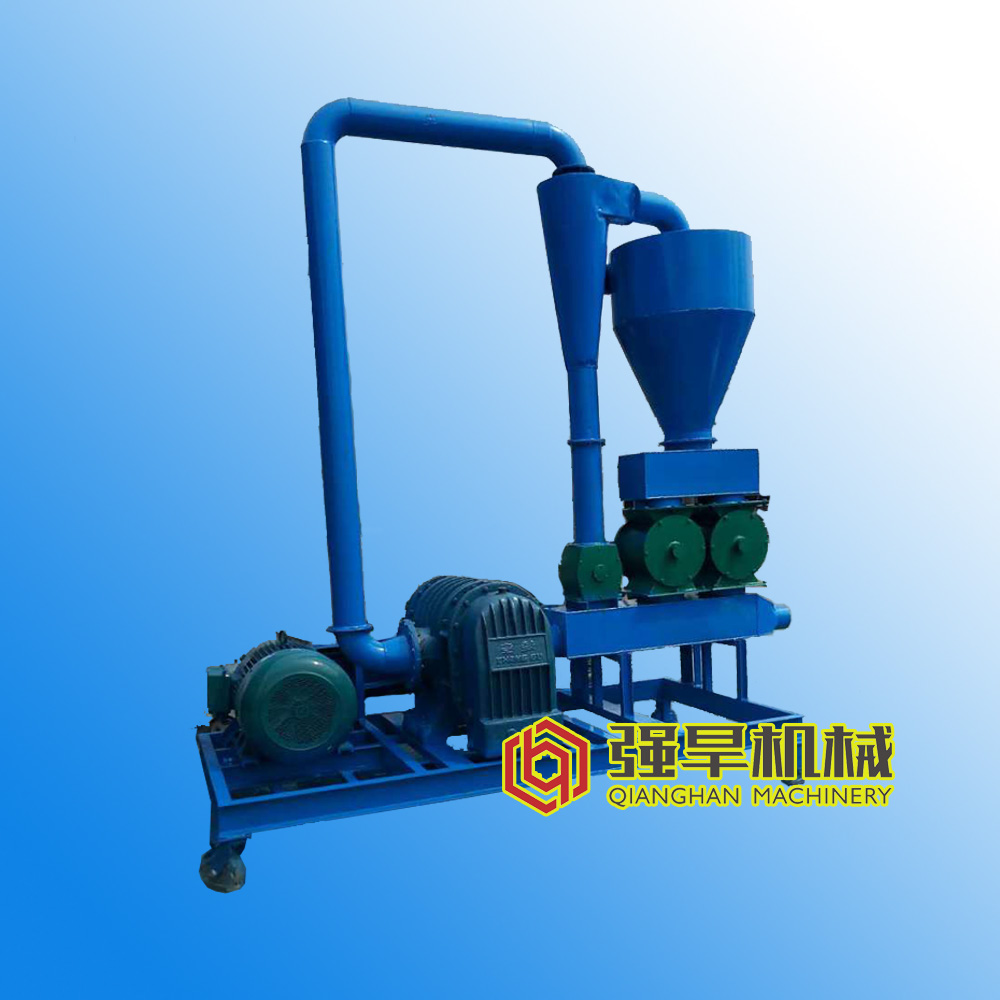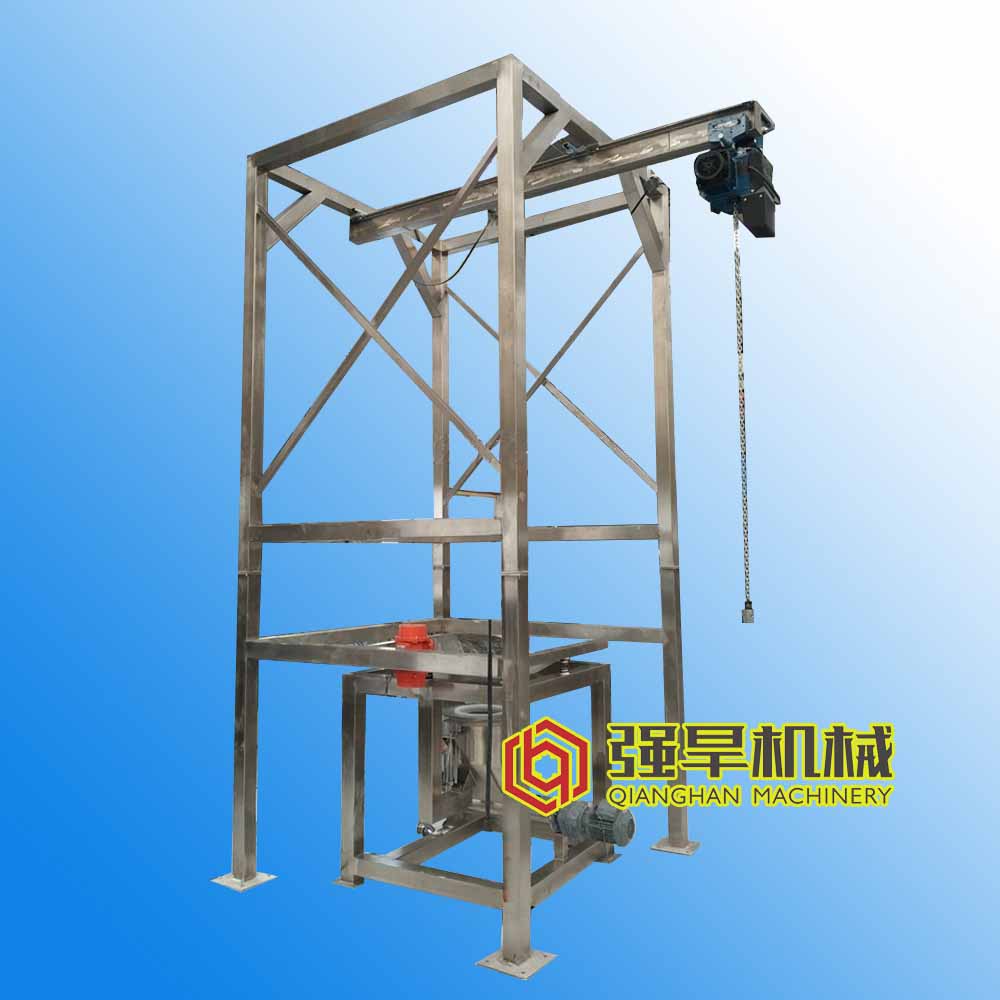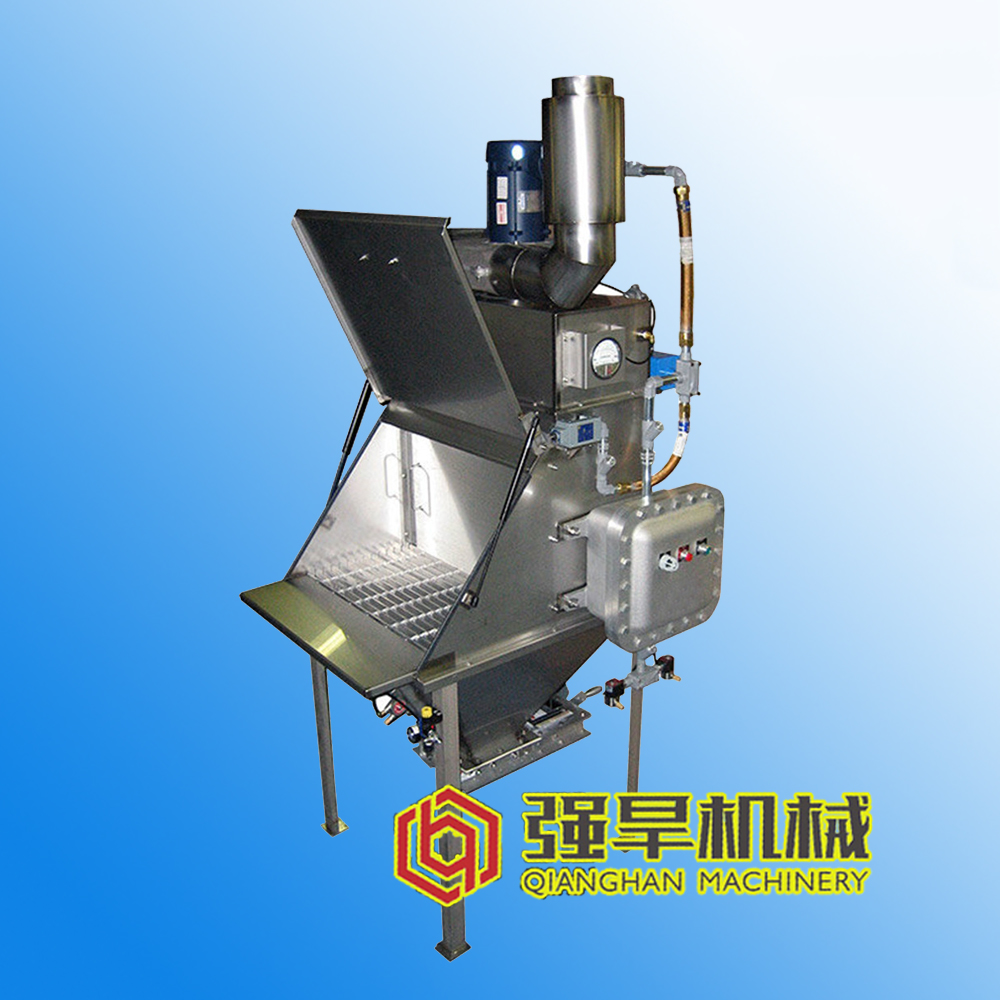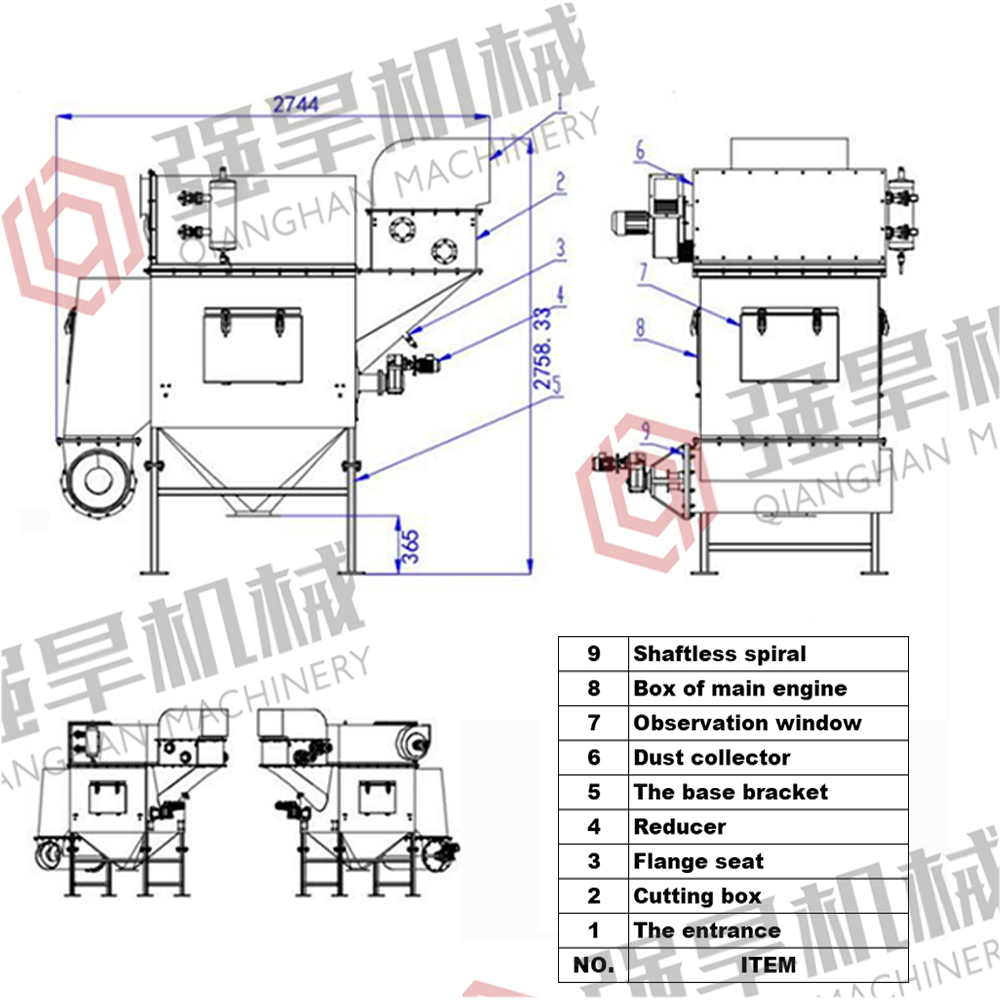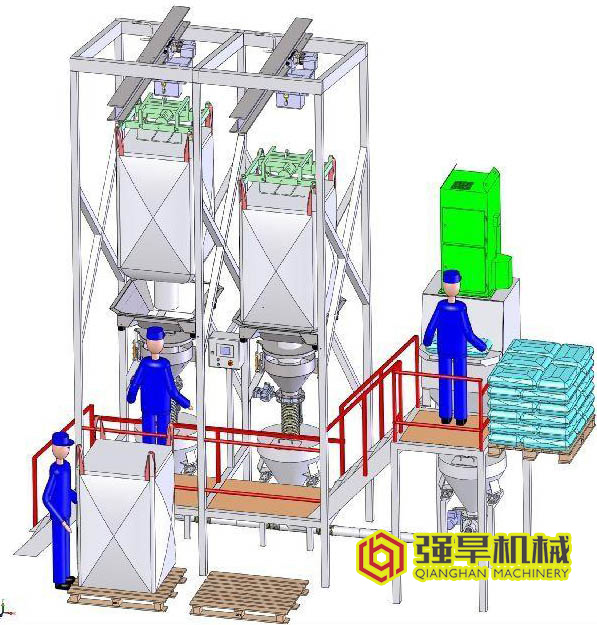Pneumatic conveying
It is also called airflow transportation. It uses the energy of airflow to transport granular materials along the airflow direction in a closed pipe. It is a specific application of fluidization technology. The pneumatic conveying device is simple in structure and easy to operate. It can be used for horizontal, vertical or inclined conveying. In the conveying process, it can also carry out physical or chemical operations such as material heating, cooling, drying and air flow classification.
1、 Introduction
Compared with mechanical conveying, the energy consumption of this method is larger, the particles are easy to be damaged, and the equipment is also easy to be eroded. Materials with high water content, adhesion or easy to produce static electricity at high speed are not suitable for pneumatic conveying. The main characteristics of pneumatic conveying are large conveying capacity, long conveying distance and high conveying speed; It can be loaded in one place and then unloaded in many places.
According to the density of particles in the pipeline, pneumatic conveying can be divided into three types
① Dilute phase transportation: the solid content is lower than 1-10kg / m3, the operating gas velocity is higher (about 18-30m / s), and the transportation distance is basically within 300m. Now mature equipment seal pump, transport operation is simple, no mechanical rotating parts, low transport pressure, no maintenance, maintenance free.
② Dense phase transportation: transportation process with solid content of 10-30kg / m3 or solid gas ratio greater than 25. The operating gas velocity is low, and the pressure is high. Now the mature equipment warehouse pump, conveying distance of more than 500m, suitable for longer distance transportation, but this equipment has more valves, pneumatic, electric equipment. The conveying pressure is high, and all pipelines need wear-resistant materials.
Intermittent gas tank type dense phase transportation (Fig. 3). It is to add the particles into the pressure tank in batches, then ventilate and blow loose. After the tank reaches a certain pressure, open the discharge valve to blow the particles into the conveying pipe for conveying.
Pulse conveying (Fig. 4). It is to pass a stream of compressed air into the lower tank to blow the material loose; Another pulse compressed air flow with frequency of 20-40min-1 is blown into the inlet of the conveying pipe, forming alternating small sections of material column and small section of air column in the pipe, which is pushed forward by air pressure.
③ Negative pressure conveying: the pressure in the pneumatic conveying pipeline is lower than the atmospheric pressure, and the material is self-priming, but the material must be discharged under negative pressure, so the conveying distance is short; Advantages: less equipment investment and load. Disadvantages: high flow rate, serious pipeline wear, wear loopholes can not be detected.
When the dilute phase is transported in horizontal pipeline, the gas velocity should be higher, so that the particles are dispersed and suspended in the gas flow. When the gas velocity decreases to a certain critical value, the particles will begin to deposit in the lower part of the pipe wall. This critical gas velocity is called deposition velocity. This is the lower limit of gas velocity for horizontal transportation of dilute phase. When the operating gas velocity is lower than this value, the deposition layer appears in the pipe, the cross section of the flow channel decreases, and the air flow above the deposition layer still runs at the deposition velocity.
When the gas velocity is high, the particles are dispersed and suspended in the air flow. When the particle transport rate is constant, the solid content in the pipeline increases with the decrease of gas velocity. When the gas velocity decreases to a certain critical value, the dense particles can not be evenly dispersed by the gas flow, and the particles converge into a plunger shape, resulting in a surge phenomenon and a sharp rise in the pressure drop. This critical velocity is called choking velocity, which is the lower limit of gas velocity when the dilute phase is transported vertically upward. For the particles with uniform particle size, the deposition velocity is approximately equal to the choking velocity. However, for the material with a certain particle size distribution, the deposition rate will be 2-6 times of the choking rate.
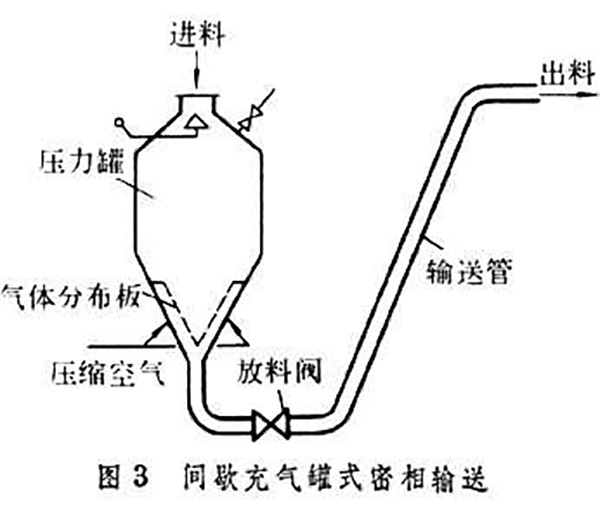
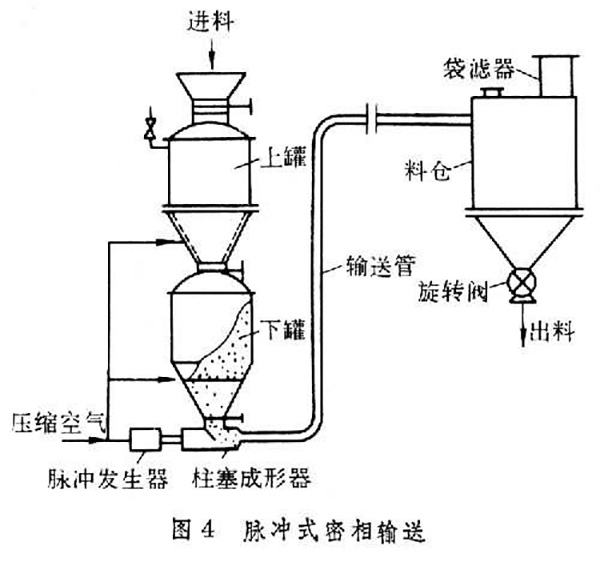
2、 Type
According to the working principle, pneumatic conveying can be divided into two types: suction conveying and pressure conveying.
Suction pneumatic conveying is to suck the atmosphere and materials into the pipeline, and transport them with low pressure air flow, so it is also called vacuum suction. Pressure pneumatic conveying --- it uses compressed air higher than atmospheric pressure to push materials for conveying.
Characteristics of suction and delivery
1. It is suitable for centralized transportation from multiple places to one place. The feeding point can be one or several, and the feeding pipe can be equipped with one or more branch pipes. It can not only transport the materials from multiple feeding points to the unloading point in turn, but also transport the materials from multiple feeding points to the unloading point at the same time.
2. Under the action of negative pressure, the material is easily inhaled, so the feeding at the throat is simple. The hopper can be opened to continuously feed and transport.
3. When the material is transported under negative pressure, the moisture is easy to evaporate, so it is easier to transport the material with higher moisture than the pressure conveying; The material supplied under heating state can be cooled by conveying.
4. The components should be kept sealed, and the structure of national surface separator, dust collector, air lock and other components is relatively complex.
5. The fan is set at the end of the system, which requires a high degree of air purification.
The characteristics of pressure feeding
1. It is suitable for scattered transportation from one place to several places. That is, the feeding point is one, while the discharging point can be one or several.
2. Compared with the suction type, the concentration and conveying distance can be greatly increased.
3. Under the condition of positive pressure, the material is easy to be discharged from the discharge port, so the structure of the separator and the dust collector is simple, and the air lock is generally not required.
4. The blower or air compressor is at the head end of the system, so the requirement of air purification is low.
5. Under the action of positive pressure, the material is not easy to enter the conveying pipe, so the structure of the feeding device is more complex.
3、 Composition
Pneumatic conveying equipment consists of four parts: 1: air source part 2: material seal pump 3: ash hopper and ash pipe 4: ash pipeline. The factory of material seal pump and ash hopper is responsible for it. The rest is provided by users. The material seal pump is composed of inlet part, diffusion mixing chamber and discharge part. The air inlet part is composed of an air inlet regulating valve, a movable air pipe, an adjusting mechanism, a nozzle, etc. The diffusion mixing chamber is composed of a pump body, a gasification device and an upper ash hopper, and the discharge part is composed of an ash discharge nipple of a diffuser (gradually reducing pipe and gradually expanding pipe).
4、 Principle
The low-pressure air from the air source enters the diffusion chamber of the pump body through the butterfly check valve of the regulating valve (or pressure reducing valve), the movable air pipe and the nozzle. When the powdery or granular material falls from the hopper and enters the high-speed air flow area between the nozzle and the diffuser, it is blown away. In addition, the gasification effect of the bottom gasification device makes the material gasified into suspension state. After that, the high-speed air flow is sent into the tapered pipe of the diffuser, flows through the throat diffusion pipe, enters the conveying pipeline, and is sent to the required discharge point, that is, the feeding process is completed.
5、 Installation
Device overview
Pneumatic conveying device belongs to dense phase medium pressure pneumatic conveying, which is suitable for the pneumatic conveying of hard broken particles and powders. It is widely used in foundry, chemical industry, medicine and grain industry.
Pneumatic conveying device and pipeline, spherical tee, supercharger, pressure elbow, etc. constitute a sealed conveying system, which can be equipped with automatic control and electric control system to realize unmanned control and PLC automatic control of the whole system.
Device classification
There are three kinds of pneumatic conveying devices, the same type:
(1) Suction pneumatic conveying device (negative pressure), which is caused by the blower in the pipeline negative pressure, so that the material movement;
(2) Pressure pneumatic conveying device (positive pressure), in the pipeline, due to the role of compressed air, the material moves in the pipeline;
(3) In the hybrid pneumatic conveying device (positive pressure and negative pressure), part of the conveying pipeline is in the state of pressure conveying, while the other part is in the state of negative pressure, or the material moves in one direction under the action of pressure, and the return movement is due to the negative pressure in the pipeline.
Device features
1. The material runs in the closed pipe, no dust, and the environment is clean.
2. Low energy consumption and low noise.
3. Flexible pipeline layout and small land occupation.
4. It can be transported for a long distance, reaching more than 500 meters.
-
About
Company profile Corporate culture Honor and qualification -
Products
Unpacking and discharging equipment Conveying and feeding equipment Crushing and mixing equipment Measuring and packaging equipment Powder valve Batching system Powder stereo accessories -
Project
Chemical industry Agriculture Logistics field Agriculture Retail sector Pharmaceutical field -
Service
-
News
Company news Industry news Common problem

Hotline
(0086)18516592766
- Add:123 Anwang Line, Anjia Town, Xinbei District, Changzhou City
- Tel:(0086)13093179063
- Mail:Chris@qhjixie.com


